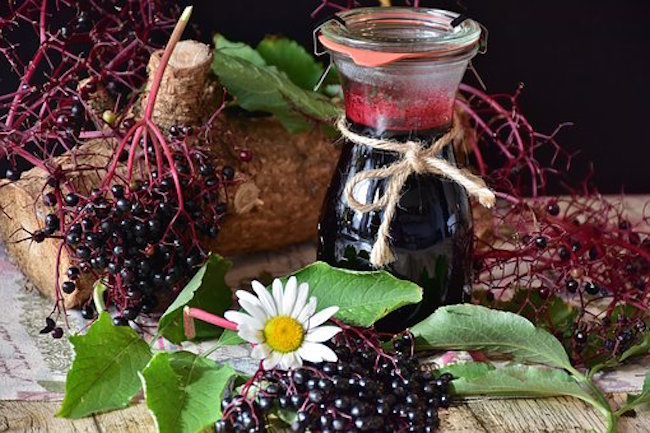Elderberry Recipes That Will Keep You Healthy All Winter by: Steve Nubie for Off The Grid News
As always, I’m going to start this article with the standard caveat: Be very careful whenever you harvest a natural or wild fruit or berry. Only 10 percent of wild berries are safe to eat. Unfortunately, the other 90 percent are toxic — and some like belladonna or deadly nightshade are downright poisonous.
Unfortunately, this applies to some degree with elderberries. There are two varieties, one has a red look when ripe and the other has a blue tone. The blue ones are safe to eat, but the red ones can be toxic. The blue variety is referred to as Sambucus candensis. The red variety is referred to as Sambucus pubens. Don’t eat the red ones, look for the blue ones. They’ll often have a frosty, white coating as they mature.
Also, you should know that the leaves, stems and roots of elderberries are toxic. It’s enough to make you think twice about harvesting this fruit, but hey, rhubarb stalks taste great and the leaves are poisonous. You just have to know what you’re doing.
Processing Elderberries
The processing step essentially involves reducing the berries to a juice that can be made into elderberry juice, elderberry syrup and elderberry jelly. But you may want to think twice before grabbing a handful of wild elderberries and chomping them down.
For one, the berries are a bit tart. In fact, I would say they’re similar to wild grapes. The other thing you’ll find is they have very thin, almost sliver-like seeds. If you have any gaps in your teeth, you’ll be looking at about 10 minutes of flossing after chewing a handful. Therefore, that’s why the first step for any elderberry recipe is juicing the fruit.




